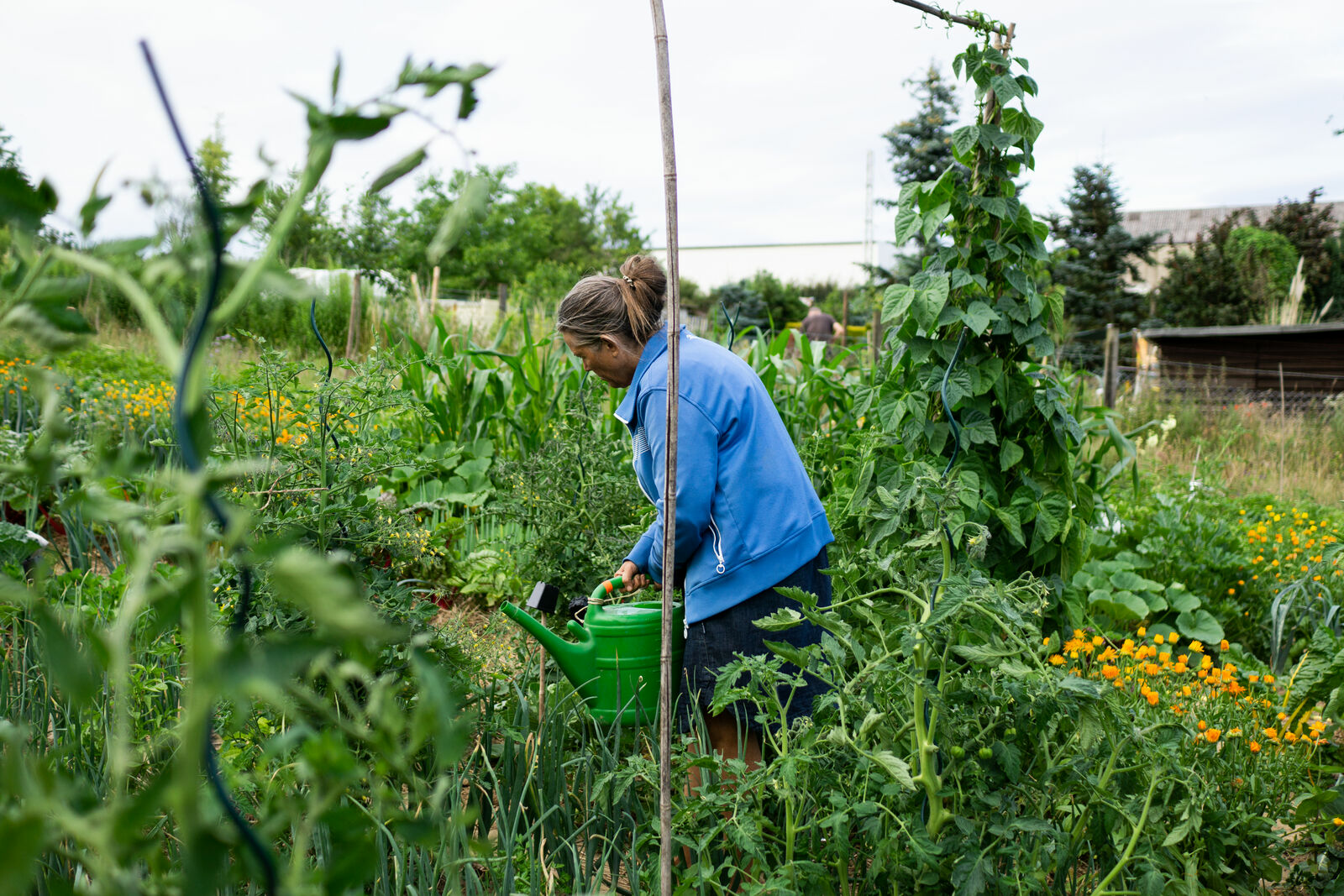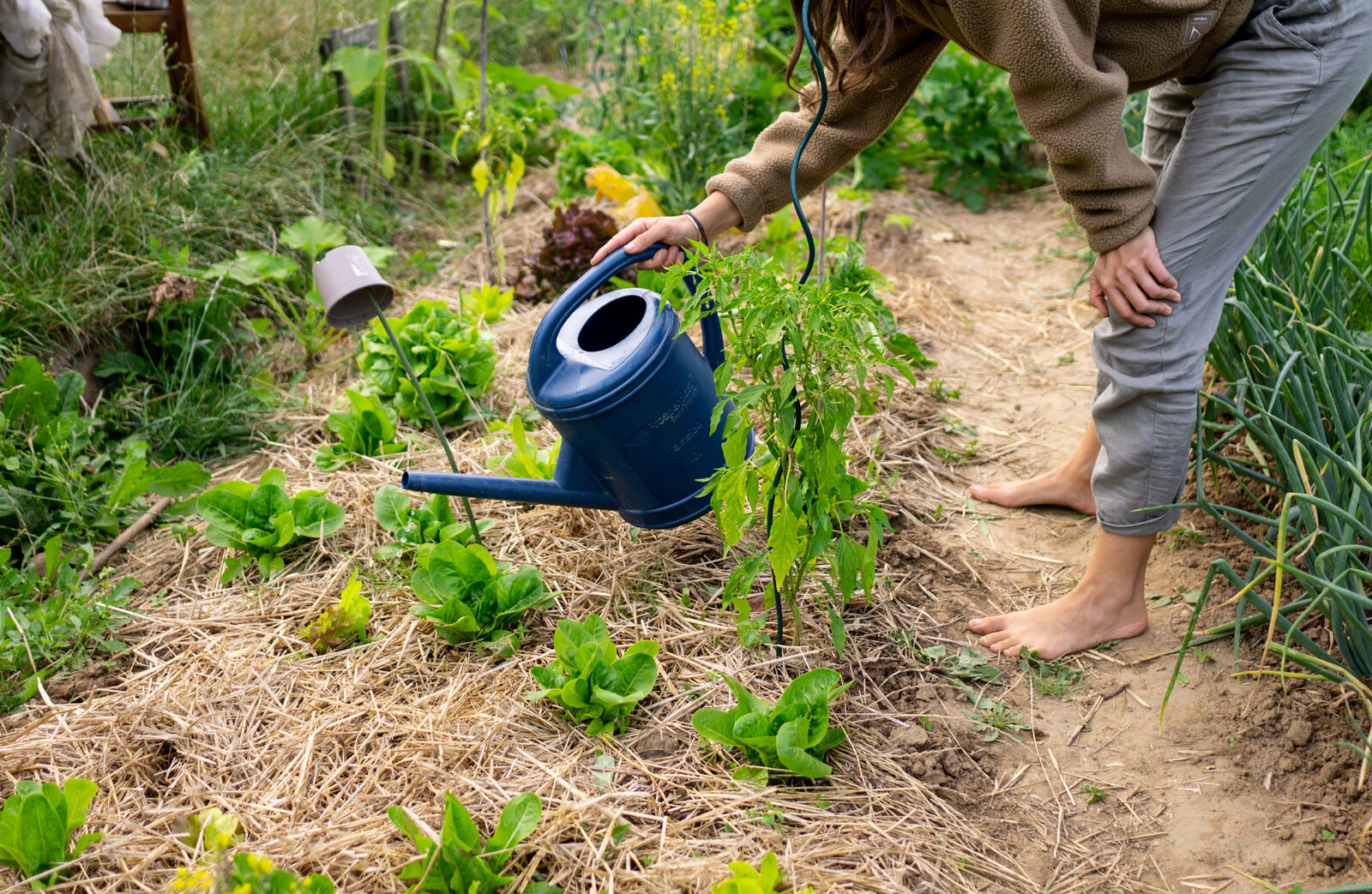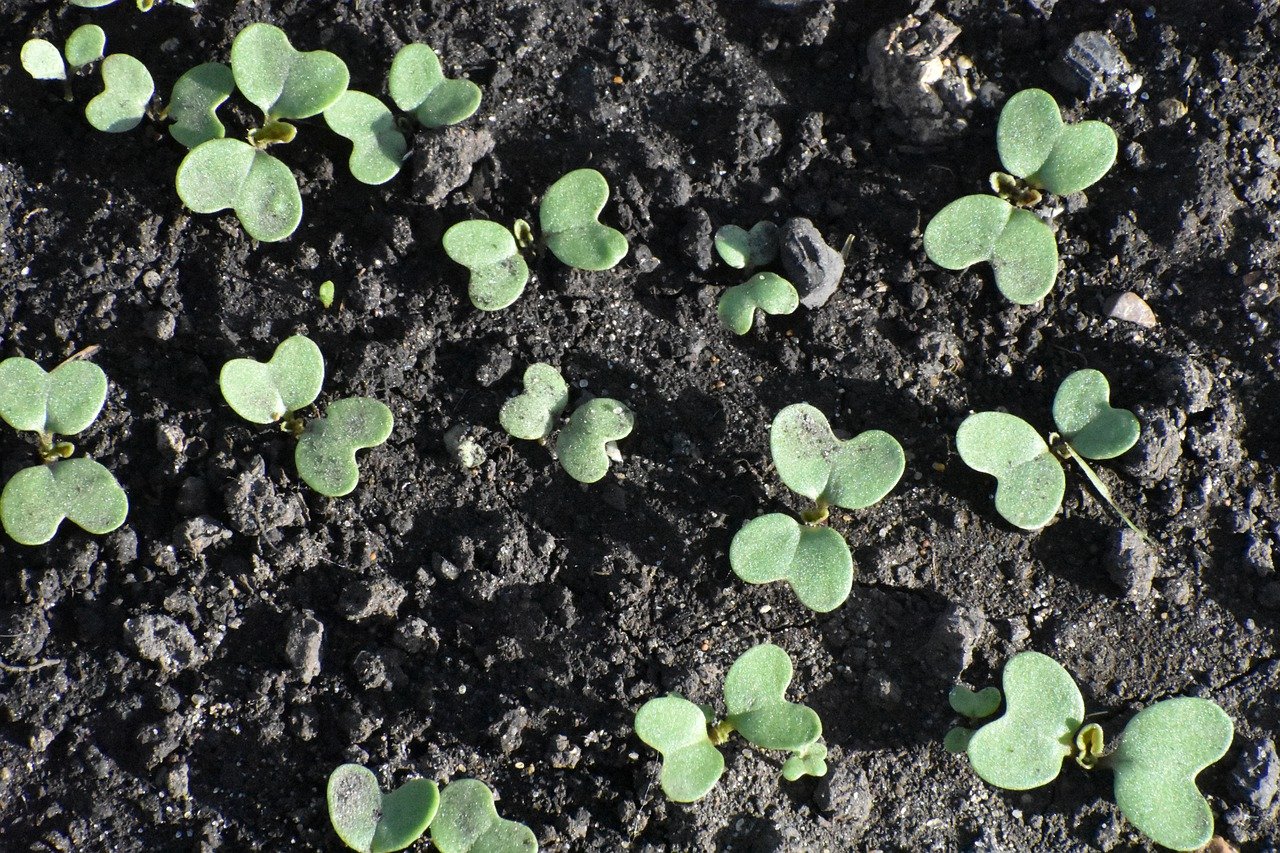
How can we save water while watering plants?
Find out here what you need to consider when watering plants to ensure they grow and thrive. We give you tips on the right way to water and save water when gardening.
This Article Contains:
- Watering Plants Properly: Here’s How
- When Is the Best Time to Water Plants?
- How Often Should Plants Be Watered?
- Watering Plants From Below
- Save Water: Tips for Gardening
- Sowing and Watering With the Weather
- Direct Sowing: Watering Young Plants Correctly
- Watering Plants on Vacation: Tips and Ideas
- Frequently Asked Questions About Watering Plants
Quick Overview
How to Water Plants Correctly:
- When to go? The right time is either early in the morning before sunrise or late in the evening after sunset.
- How often? It is better to water less often and more abundantly, every few days is sufficient, depending on the weather and soil type. Potted plants should be watered up to twice a day on sunny days.
- Water plants from below to avoid burning the leaves
How to Save Water While Watering Plants:
- Sowing with the weather: The optimum sowing time is either shortly before or within a rainy period lasting several days.
- Water young plants properly: To ensure that your young plants develop strong, deep roots, you should water generously every few days for the first two weeks after germination. After that, water as little as possible to put the plants under drought stress and stimulate root growth.
Watering Plants Properly: Here’s How
Watering plants is a basic but crucial task for any hobby gardener or plant lover. In order for your young plants to grow healthy and strong, it is important to know the right amount of water and the optimal watering rhythm. Incorrect watering can lead to drought stress, root rot and other undesirable consequences that impair plant growth. In this article, you will learn how to master watering and what you need to bear in mind to provide your green protégés with the best possible care.
When Is the Best Time to Water Plants?
The right time is particularly important on sunny days. Even if your plants droop their leaves at midday, you should resist the temptation to water them immediately. Due to the midday heat, many plants reduce their metabolism to a minimum until it gets cooler again in the afternoon. Therefore, they will not be able to absorb the water if you water them in full heat. In addition, the soil is at its hottest at this time of day and much of the precious and laborious watering water simply evaporates again until the plants are able to absorb it again in the evening.
Water Plants in the Morning or Evening?
It is best to water either early in the morning, before the sun warms the bed, or in the evening after sunset. This gives your plants a chance to absorb the water before it evaporates and prepare for the heat of the (next) day. If you have an automatic watering system, it is even worth setting it to 3 o'clock at night, as this is when the soil is at its coolest on average.

Any Questions?
If you have any questions, you will find help from numerous experienced and helpful gardeners in our Fryd community.
Join Community NowHow Often Should Plants Be Watered?
It is better to water the plants in your bed less frequently and more abundantly . Watering after short rain showers is most efficient. These often only moisten the surface of your bed. If you water again now, the water is absorbed much better into the deeper layers, where it is better protected from evaporation. This also stimulates deep root growth. A Layer of Mulch also protects the soil from water loss through evaporation.
Depending on the location and weather, you may need to waterpotted plants up to twice a day in summer. The soil in the pots dries out much faster, which can quickly become dangerous for your plants.
Watering Plants From Below
If you water by hand, make sure that you water specifically at the base of the shoot and that the leaves do not get wet. When the sun is shining, water droplets on the leaves act like lenses that focus the light and can burn the leaves.

Save Water: Tips for Gardening
Water is a precious resource and a fundamental prerequisite for successful gardening and healthy plant growth. As horticulture requires a lot of water, it is particularly important to use it responsibly and efficiently. Environmentally conscious gardening is not just about growing vegetables without polluting the environment with toxins. It is also important to use and protect existing resources well, as they are becoming scarce. Below you will find valuable tips on how to save water when gardening.
Sowing and Watering With the Weather
Weather and soil moisture play an important role when sowing if you want to work as efficiently and water-savingly as possible in the garden. Not only will you have to carry less water, but you will also protect the water table, which is often very low in summer.
The Best Time for Sowing
The optimum sowing time is either shortly before or during a period of rain lasting several days. The soil is then moist down to the deep layers. This condition is important for the seedling, as it is particularly vulnerable at the very beginning of its gardening career. If the seedling dries out after germination, it will not sprout any further and will die. Even very young plants have not yet developed deep roots, which means they can dry out quickly. A period of rain lasting several days therefore provides optimum starting conditions for germination and young plants. Of course, longer periods of rain are not always possible. Make sure that the soil around your seed is evenly and thoroughly moistened until germination.
Direct Sowing: Watering Young Plants Correctly
Once the seed has germinated and broken through the ground cover, the seedling not only begins to grow above the soil, but also develops roots in the soil, which supply the plant with water and nutrients. In order for a plant to survive longer periods of drought, it is important that it develops roots that are as strong and long as possible in order to reach deeper layers of soil where water reserves are still stored even during longer periods of drought. After a prolonged period of rain, not only will the seed germinate, but the water will also retreat into deeper layers over time. For reasons of efficiency, roots are only formed where water is available. The roots of the seedlings and young plants therefore follow the water into the depths.
Promote Root Growth
In addition, during the first two weeks after germination, you should water the soil as thoroughly and evenly as possible every few days so that the watering water also moistens the deeper soil layers. This will allow the young plant to grow its roots into these moist layers. After this time , you should water as little as possible, because although there is little water in the topsoil, the subsoil should still be sufficiently moist; here the water cannot evaporate as easily. This phase creates a so-called "drought stress", which encourages the young plant to develop as many deep roots as possible. This allows the plant to get the water it needs more efficiently and it does not need to be watered every day, even in midsummer. The same applies to seedlings.

As a counter-example: if you water your plants daily, but only sparingly, the water will only reach the surface layers. In contrast to the topsoil, the subsoil is now less moist in the short term, which means that the plants are not encouraged to develop deep roots. During the dry summer months, the shallow-rooted plants cannot reach the water reservoirs in the deep soil layers. There is only one option left to feed the plants: water them a lot!
Watering Plants on Vacation: Tips and Ideas
If you like gardening, you know the problem: you're about to go on vacation and you're worried that the plants in your garden won't survive the time. Then it's all for nothing and the disappointment is huge. However, there are various ways you can ensure they have enough water during your vacation.
One common method is to use automated watering systems that are controlled by timers and allow precise control over the amount of water and the timing of watering. Another option is the use of"ollas" - traditional, unglazed clay pots that are buried in the ground and filled with water. The plants can absorb the water through the porous walls of the ollas, ensuring slow and even watering. An additional option is the use of so-called water reservoirs, such as bottles or clay cones filled with water, which are placed upside down in the soil and slowly release the water to the plants. Finally, you can also ask a trusted person to water the plants while you are away to ensure that they are optimally cared for.
I hope I was able to help you save water and time in the garden! If you have any questions or comments on the topic, write to us at magazin@fryd.app. Follow us on Facebook or Instagram. You can also subscribe to our magazine so you never miss an article again.
Want to get helpful gardening tips all year round and plan your own beds in the best possible way? Then register here or download the Fryd app for Android or iOS.
Fryd - Your digital bed planner
Isabell
Current Topics in the Community

#red , #tuesday

Liked 1 times
#testpostcount

Dec 2025
Popular Articles

Companion Plants for Carrots: What (Not) to Plant With Carrots

Companion Plants for Celery : What (Not) to Plant With Celery?

Strawberry Types: List of Best Strawberry Varieties

Companion Planting With Strawberries: Companion Plants and Planting Plan

Basil Varieties & Types at a Glance

What to Plant With Cabbage: Good and Bad Companion Plants

Fertilizing Strawberries: Home Remedies & Natural Fertilizers at a Glance

Growing Sweet Potatoes: Tips on Cultivation & Companion Plants

Companion Plants for Kitchen Herbs: Chives, Parsley & Co

What Herbs Can Be Planted Together?
FAQ
How often should plants be watered?
It is better to water generously every few days so that the soil is well moistened. This way, the plants will regularly experience slight drought stress, which promotes root growth.
To minimize water evaporation, you should water either early in the morning before sunrise or late in the evening after sunset. This is when the plants get the most out of it.
How often should I water potted plants?
Potted plants dry out much faster and need to be watered up to twice a day in a sunny location and warm temperatures.
Should plants be watered from below?
Water your plants from below, especially when the sun is shining. Water droplets on the leaves can otherwise lead to burns.